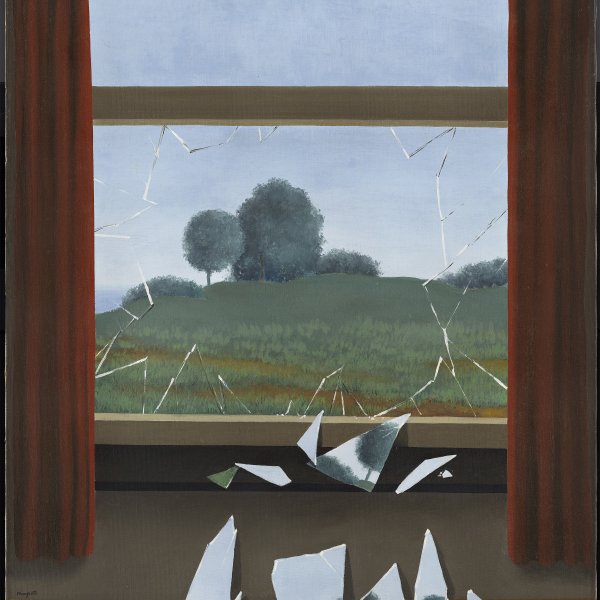René Magritte
Lessines, 1898-Brussels, 1967
René Magritte was a key figure in the development of Surrealism, especially in Belgium, his country of birth. He studied at the Brussels Académie Royale des Beaux-Arts from 1916 to 1918 and began to paint in an Impressionist style. In 1919 he was attracted by Futurism and his work soon veered towards Cubo- Futurism. His discovery of the metaphysical painting of Giorgio de Chirico in 1922 influenced the direction in which his artistic career developed thereafter.
In 1926 Magritte was the main driving force behind the Belgian Surrealist group that included Camille Goemans and Paul Nougé, and the following year he travelled to Paris, where he lived until 1930. There he became involved in the activities of the Surrealist group headed by André Breton, and also met Max Ernst and Paul Éluard. In his works from this period Magritte deliberately shunned the world of the subconscious and developed a type of Surrealism based on absurd associations of objects, which he painted with a photographic precision. Through these apparently simple images he succeeded in revealing to the viewer the most mysterious side of his familiar environment.
On returning to Belgium, Magritte decided to lead the life of a middle-class Belgian and subjected his daily activities to a strict routine, despite which his home became a meeting place for artists and writers. Following a brief period during the German occupation in which he returned to an Impressionistic style, probably with the intention of parodying this nineteenth-century movement, in 1947 he embarqued in what he called the époche vache in which he sought to irritate the French public with cruel themes, crudely executed in a Fauve style. After the scandal that their showing caused in Paris, Magritte returned to his previous style and added to his output sculptures, Surrealist short films and commissions for mural paintings. In 1948 he signed a contract with the New York dealer Alexandre Iolas, which brought him international fame.
In 1926 Magritte was the main driving force behind the Belgian Surrealist group that included Camille Goemans and Paul Nougé, and the following year he travelled to Paris, where he lived until 1930. There he became involved in the activities of the Surrealist group headed by André Breton, and also met Max Ernst and Paul Éluard. In his works from this period Magritte deliberately shunned the world of the subconscious and developed a type of Surrealism based on absurd associations of objects, which he painted with a photographic precision. Through these apparently simple images he succeeded in revealing to the viewer the most mysterious side of his familiar environment.
On returning to Belgium, Magritte decided to lead the life of a middle-class Belgian and subjected his daily activities to a strict routine, despite which his home became a meeting place for artists and writers. Following a brief period during the German occupation in which he returned to an Impressionistic style, probably with the intention of parodying this nineteenth-century movement, in 1947 he embarqued in what he called the époche vache in which he sought to irritate the French public with cruel themes, crudely executed in a Fauve style. After the scandal that their showing caused in Paris, Magritte returned to his previous style and added to his output sculptures, Surrealist short films and commissions for mural paintings. In 1948 he signed a contract with the New York dealer Alexandre Iolas, which brought him international fame.





